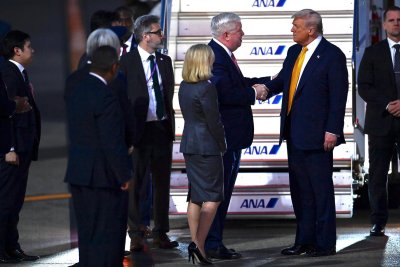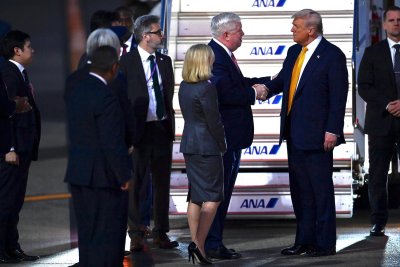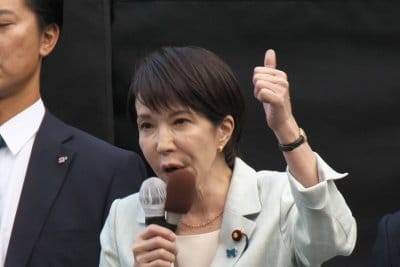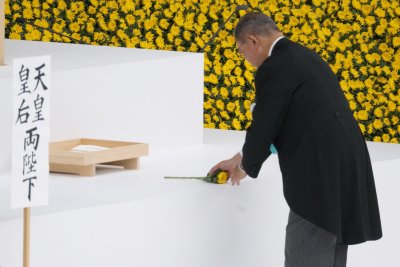Trump meets with Japanese Emperor, plans to meet with new PM Tuesday

President Donald Trump shakes hands with U.S. Ambassador to Japan George Glass upon arrival at Haneda International Airport in Tokyo, Monday. The president is on a three-day visit that includes meetings with Japan’s newly elected Prime Minister Sanae Takaichi and Emperor Naruhito. Pool Photo by David Mareuil/EPA
Oct. 27 (UPI) — President Donald Trump landed in Tokyo Monday morning as part of a three-nation Asia trip, meeting with Emperor Naruhito and new Prime Minister Sanae Takaishi
Trump and Naruhito met Monday morning at the emperor’s home, then retired to his hotel room. He has no more public events scheduled for the day.
The visit was Trump’s first trip to Japan since 2019. His goal for the trip is to reaffirm ties with Japan and encourage Japanese companies to invest in the United States.
He is scheduled to meet on Tuesday with Takaishi, who became Japan’s first woman prime minister just last week. Trump and Takaishi spoke on the phone Saturday. Trump praised Takaishi to reporters for being “philosophically close” to former Prime Minister Shinzo Abe.
“It’s going to be very good. That really helps Japan. I think she’s going to be great,” Trump told reporters on Air Force One, Kyodo News reported.
Trump’s next stop is Busan, South Korea, where he’ll meet with President Xi Jinping. On Air Force One, Treasury Secretary Scott Bessent said that Trump and Xi would work on the U.S.-China trade deal on Thursday. Other things they will discuss are fentanyl, rare earth minerals and agricultural purchases, Bessent said.
Trump also told reporters that he would be willing to meet with North Korea‘s Kim Jong-un this week. A reporter asked if a meeting were possible, would he extend his Asia trip, and Trump said he hadn’t thought of it, but it would “be easy to do.”
On Sunday in Kuala Lumpur, Malaysia, Trump oversaw the signing of a peace agreement between Cambodia and Thailand.




